Fun question. I believe this works, but please test it out. It's been a long long time since trig.
http://jsfiddle.net/9DHSf/3/
The comments basically explain it. I find a "central" point (not sure if this is bulletproof, there may be a better way of calculating this or it may not matter that much), figure out how many degrees around that point each point is and then order them by that. Tested it with various points and it seems to work.
var points = [
{x: 40, y: 40},
{x: 60, y: 40},
{x: 60, y: 60},
{x: 40, y: 60},
{x: 0, y: 50},
{x: 50, y: 0},
{x: 50, y: 100},
{x: 100, y: 50}
];
// get the canvas element using the DOM
var canvas = document.getElementById('canvas');
// Make sure we don't execute when canvas isn't supported
if (canvas.getContext) {
// use getContext to use the canvas for drawing
var ctx = canvas.getContext('2d');
ctx.fillStyle = "red";
// calculate max and min x and y
var minX = points[0].x;
var maxX = points[0].x;
var minY = points[0].y;
var maxY = points[0].y;
for (var i = 1; i < points.length; i++) {
if (points[i].x < minX) minX = points[i].x;
if (points[i].x > maxX) maxX = points[i].x;
if (points[i].y < minY) minY = points[i].y;
if (points[i].y > maxY) maxY = points[i].y;
}
// choose a "central" point
var center = {
x: minX + (maxX - minX) / 2,
y: minY + (maxY - minY) / 2
};
// precalculate the angles of each point to avoid multiple calculations on sort
for (var i = 0; i < points.length; i++) {
points[i].angle = Math.acos((points[i].x - center.x) / lineDistance(center, points[i]));
if (points[i].y > center.y) {
points[i].angle = Math.PI + Math.PI - points[i].angle;
}
}
// sort by angle
points = points.sort(function(a, b) {
return a.angle - b.angle;
});
// Draw shape
ctx.beginPath();
ctx.moveTo(points[0].x, points[0].y);
for (var i = 1; i < points.length; i++) {
ctx.lineTo(points[i].x, points[i].y);
}
ctx.lineTo(points[0].x, points[0].y);
ctx.stroke();
ctx.fill();
}
function lineDistance(point1, point2) {
var xs = 0;
var ys = 0;
xs = point2.x - point1.x;
xs = xs * xs;
ys = point2.y - point1.y;
ys = ys * ys;
return Math.sqrt(xs + ys);
}
EDIT: After reading your edit, if this "reference point" is known and within the polygon, you should replace "center" with this point.

